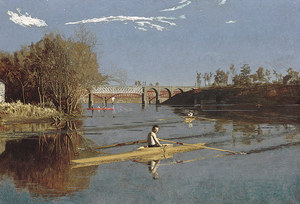Some people, and museums, stoop to gain attention, but a consortium of art centers around Buffalo today went in the other direction: they hired French tightrope walker Didier Pasquette to perform a high-wire walk between two statues atop the city’s landmark Liberty Building. It takes place at 6:30 this evening, and Pasquette will walk again at noon on Sunday in Niagara Falls.
The point, I guess, is to kick off Beyond/In Western New York 2010: Alternating Currents, an extragavanza of art at more than two dozen venues in Erie and Niagara Counties, upstate.
I’m sad that art needs a stunt to gain attention, but at least this one isn’t horrible and doesn’t lower the discourse. And maybe it will excite people to see this biennial, which would be a good thing. If you’re reading this before Pasquette takes off, you can watch it live here.
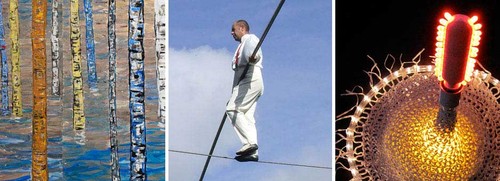 The roots of this show go back to 1934, at the Albright-Knox Art Gallery, but it has gone through a couple of reincarnations (and protests) along the way. This time, it’s showing art from the region as well as, for the first time, art invited from non-regional artists, like Andy Goldsworthy and Lorraine O’Grady. I wish BIWNY had not done that: it’s hard enough for artists outside the big art centers to get showings without making it tougher on the occasions meant for them — at least by taking attention away from them.
The roots of this show go back to 1934, at the Albright-Knox Art Gallery, but it has gone through a couple of reincarnations (and protests) along the way. This time, it’s showing art from the region as well as, for the first time, art invited from non-regional artists, like Andy Goldsworthy and Lorraine O’Grady. I wish BIWNY had not done that: it’s hard enough for artists outside the big art centers to get showings without making it tougher on the occasions meant for them — at least by taking attention away from them.
On the other hand, I do like that this year’s theme, Alternating Currents, refers to two historical events in the area: In the 1890, the war between Thomas Edison’s view of electricity (DC) and Nicholas Tesla’s (AC) was carried out in Niagara Falls, ending with Tesla’s AC delivery of electricity to Buffalo. Two years earlier, King Gillette advocated the building of a Utopian city in the area, powered by Niagara Falls. Hopefully, many artists drew inspiration from these events or the theme overall.
The exhibition, which was juried, is expected to attract 80,000 visitors during its run, which extends until Jan. 16, 2011.
I’m not going to attempt to talk about the quality of the art from afar, though I have the catalogue, except to say that much looks to be worthy. Happily, the website listed above has a list of the artists, with a sample of their work and a podcast statement from each one –so you can look yourself. Nice touch, that recorded statement.
The biennial’s events, which really get underway tomorrow, are also listed, along with travel and other information. If you’re in the neighborhood, why not stop in?
Photo Credit: Courtesy Beyond/In Western New York

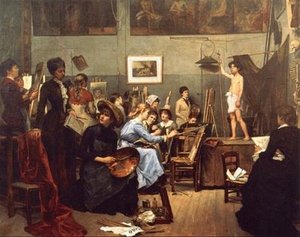
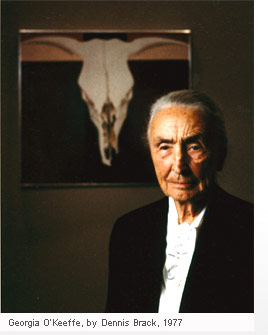 But they leave traces, and the
But they leave traces, and the 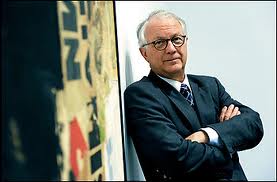 It’s a naming gift, and thus won’t be official until the Regents of the Smithsonian Institution meet to approve it this fall. But it’s real, and it comes on top of $1.5 million Koshalek has raised for another part of his $15 million project to put the Hirshhorn Museum on the world’s cultural map — a classroom of the future in the lobby.
It’s a naming gift, and thus won’t be official until the Regents of the Smithsonian Institution meet to approve it this fall. But it’s real, and it comes on top of $1.5 million Koshalek has raised for another part of his $15 million project to put the Hirshhorn Museum on the world’s cultural map — a classroom of the future in the lobby. 